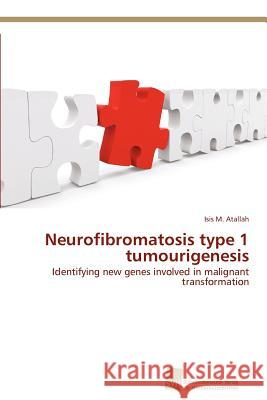Neurofibromatosis type 1 tumourigenesis » książka
Neurofibromatosis type 1 tumourigenesis
ISBN-13: 9783838134475 / Angielski / Miękka / 2012 / 144 str.
Neurofibromatosis type 1 (NF1) is one of the most frequent dominantly inherited diseases. NF1 patients harbour an increased risk of developing benign nerve sheath tumours and a 10% lifetime risk of developing malignant peripheral nerve sheath tumours. Molecular mechanisms involved in NF1 malignant transformation are still largely unknown. This book provides an insight into the pathways disrupted in NF1 associated tumourigenesis. First, a panel of genes useful for subclassification of nerve sheath tumours was identified by cDNA array technology. Second, dysregulated expression of several genes, known to play important roles in tumour formation, was confirmed on the protein level. Third, the prognosis relevance of gene misregulation was assessed and several genes were pointed out as potential targets of new therapeutic strategies.
Neurofibromatosis type 1 (NF1) is one of the most frequent dominantly inherited diseases. NF1 patients harbour an increased risk of developing benign nerve sheath tumours and a 10% lifetime risk of developing malignant peripheral nerve sheath tumours. Molecular mechanisms involved in NF1 malignant transformation are still largely unknown. This book provides an insight into the pathways disrupted in NF1 associated tumourigenesis. First, a panel of genes useful for subclassification of nerve sheath tumours was identified by cDNA array technology. Second, dysregulated expression of several genes, known to play important roles in tumour formation, was confirmed on the protein level. Third, the prognosis relevance of gene misregulation was assessed and several genes were pointed out as potential targets of new therapeutic strategies.











